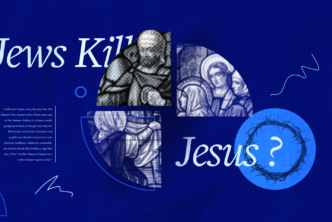 The newly updated New International Dictionary of New Testament Theology and Exegesis was updated because of the assiduous work of one man, Moisés Silva, whose work I have admired for a long time. Because of that admiration, I was both excited about the update and curious to know what it entailed. So I emailed Dr. Silva with a personal note:
The newly updated New International Dictionary of New Testament Theology and Exegesis was updated because of the assiduous work of one man, Moisés Silva, whose work I have admired for a long time. Because of that admiration, I was both excited about the update and curious to know what it entailed. So I emailed Dr. Silva with a personal note:
Dr. Silva,
I learned from you (and Barr, et al.) that theological lexicography is bad.* So when I see promos for the new NIDNTTE that say, “This volume…includes in-depth treatments of theologically rich words,”1 my eyebrows are raised. When I hear, “learn how many Greek words can be used for ‘love’ and what is the proper way to distinguish their nuances,”2 my eyes threaten to roll.
But then I see your name as editor and Carson and Wallace as blurbers—and then I remember an exchange I had with you a few years ago when you sent me the ἀγάπη entry from the upcoming NIDNTTE.
I suppose I’m just asking you to allay my skepticism and assure me that the NIDNTTE was revised according to your linguistic principles, which I uphold.
Thank you,
mlwj
I said “theological lexicography is bad” with my tongue trending toward my cheek, but I should have been more careful. Silva graciously responded,
Thanks for your note, Mark.
It is true that in Biblical Words and Their Meaning I emphasize the pitfalls that TDNT and its users face, but that’s a little different from saying that “theological lexicography is bad.”
Now the original NIDNTT sought to provide a methodological improvement on TDNT by grouping words according to concepts. The revised NIDNTTE goes beyond that. Here let me quote the relevant section from the Introduction:
Unfortunately, the adoption of a new structure by the Theologisches Begriffslexikon, and thereafter by NIDNTT, was not sufficient to transcend the basic problem. Some of the articles did have helpful introductory paragraphs, but these were much too brief and sketchy. In addition, the concepts that served as entries were merely German/English headings, not true semantic fields, while the number of Greek terms discussed under each concept was much too small, and the Greek terms chosen were not always semantically connected but had some other kind of association (e.g., the adverb ὀπίσω, “after,” was discussed under the heading Disciple). Most important, the articles themselves, with rare exceptions, discussed each term (with its cognates) in isolation from the other terms listed under the concept; in fact, different words within the same semantic field were usually treated by different authors. What we find, therefore, is largely a physical, not a semantic, grouping of the words discussed. Moreover, the reality is that most users of so-called theological dictionaries of the Bible are motivated by interest in a particular word at a time, and many of them find the conceptual grouping an inconvenience in locating the discussion of that word.
The present edition reverts to an alphabetical organization, but it preserves—indeed, enhances—the distinctive interest in conceptual groupings by several new features.
(1) In the first place, the body of the work is preceded by a comprehensive List of Concepts. This register parallels the organization of the material in the first edition, but with three significant improvements: (a) it provides a fuller (though still not exhaustive) catalog of concepts; (b) it includes a much larger number of cross-references that lead the user to antonyms and to other terms with looser semantic associations; and (c) it lists, under each concept, a far greater number of Greek terms (plus a brief English gloss), with a link to the appropriate articles in the case of terms that receive separate discussion. It should be noted that this list provides a modest catalog of semantic fields, though with no pretensions that it is a scientific arrangement (such as is attempted in J. P. Louw and E. A. Nida, Greek-English Lexicon of the New Testament Based on Semantic Domains, 2 vols., 2nd ed. [1989], a work that contributed greatly to the present dictionary). Moreover, the list can serve, again in a modest way, as a partial English-Greek dictionary of NT terms.
(2) In the body of the work each article lists all cognates found in the NT, followed by an indication of the concept(s) to which the word group belongs. This information is linked to the List of Concepts so that the user can quickly identify the other word groups that either occupy the same semantic field or are otherwise related to it.
(3) To a greater degree than is usual in theological dictionaries, the articles themselves from time to time call attention to semantic relationships between the word group being discussed and other lexical items. For practical reasons these comments are usually brief—and often merely suggestive—but in selected articles substantial discussion of synonyms is provided (see, e.g., ἀγαθός, ἀγαπάω, καινός).
Later in the Introduction I mention the perils of theological lexicography and then say the following:
It can hardly be doubted, however, that TDNT and comparable reference works continue to provide a distinctive and valuable approach to the study of Scripture. The challenge is to minimize its problems. The present edition seeks to do so not only by the attention it pays to broader semantic relations (see above, 2. Structure) but also by the way the material is covered. While avoiding an artificial separation between linguistic and conceptual data, the two are distinguished as carefully as is feasible—e.g., by separating them in the presentation of the data when appropriate, by making a special effort to avoid ambiguity in the discussion of specific instances, and occasionally by alerting the user to invalid inferences.
The question remains, however, whether it is justifiable to produce theological dictionaries in which most of the terms covered are not theological at all. A relatively small percentage of the NT vocabulary consists of terms that have developed a specialized Christian sense (e.g., ἁμαρτία, “sin”; σάρξ, “flesh”; χάρις, “grace”). The same is true of specialized vocabulary in other bodies of literature (e.g., only a fraction of the words used by Plato may be regarded as technical or semitechnical philosophical terms). Specialized terms are highly referential (cf. proper names, whose semantic value is not strongly affected by how they are used); as such, they are able by themselves to convey a considerable amount of semantic information, as in the case of νόμος when this word has the specialized sense “the Mosaic law.” (See further Silva, Biblical Words, 101–8.)
While most of the words in the NT are not of this type, even nontheological terms are often found in theological contexts. The value of a theological dictionary is that it can offer exegetical discussion of such contexts by focusing on one word at a time. The point, then, is not necessarily that the word in question has acquired its own theological significance, but rather that there is a special benefit in assessing how that word is functioning in theological contexts. Good commentaries, of course, include discussions of this type through a running exposition of the passage. A theological dictionary, by bringing together the theological passages where the word is found, is able to provide a richer, more systematic exposition of the lexical data.
In addition, there are many other kinds of revisions in the articles. It is my hope that users will take the time to read through the Introduction carefully, since doing so will be a great help to them in using the material profitably.
Thanks a bunch for your interest.
Blessings, Moisés.
Silva also clarified later:
Mark, no additional contributors were involved in the work of revision, but the word revision is important here. Even though I did quite a bit of rewriting and even fresh writing, most of the material comes from the original contributors. My responsibility was to bring more consistency to the work, to omit and add material as necessary, to do some selective updating, etc. Because the changes were so numerous and sometimes so substantial, it would have been less than candid to retain the names at the end of each article. However, I should add that the Introduction includes this caveat: “(Although the revising editor assumes responsibility for the final form of this edition, readers should not infer that the views expressed throughout the work necessarily reflect his own opinions.)”
This is what a true Christian scholar does: he serves the church with a careful appropriation of the work of others and a diligent effort to make it available to the church. Whereas I was tempted to take Silva’s critiques of theological lexicography as a reason not to use theological dictionaries at all, he was judicious enough to give a balanced appraisal of the value of that work.





